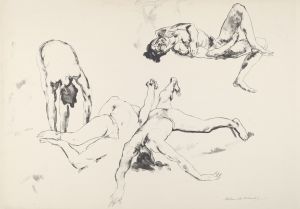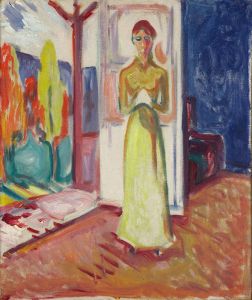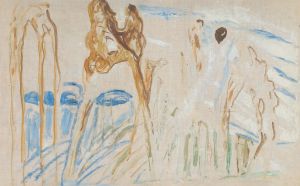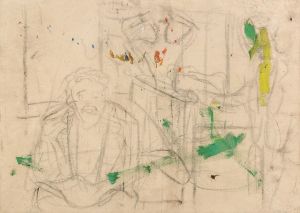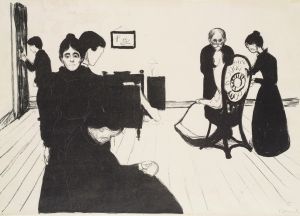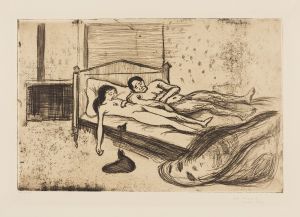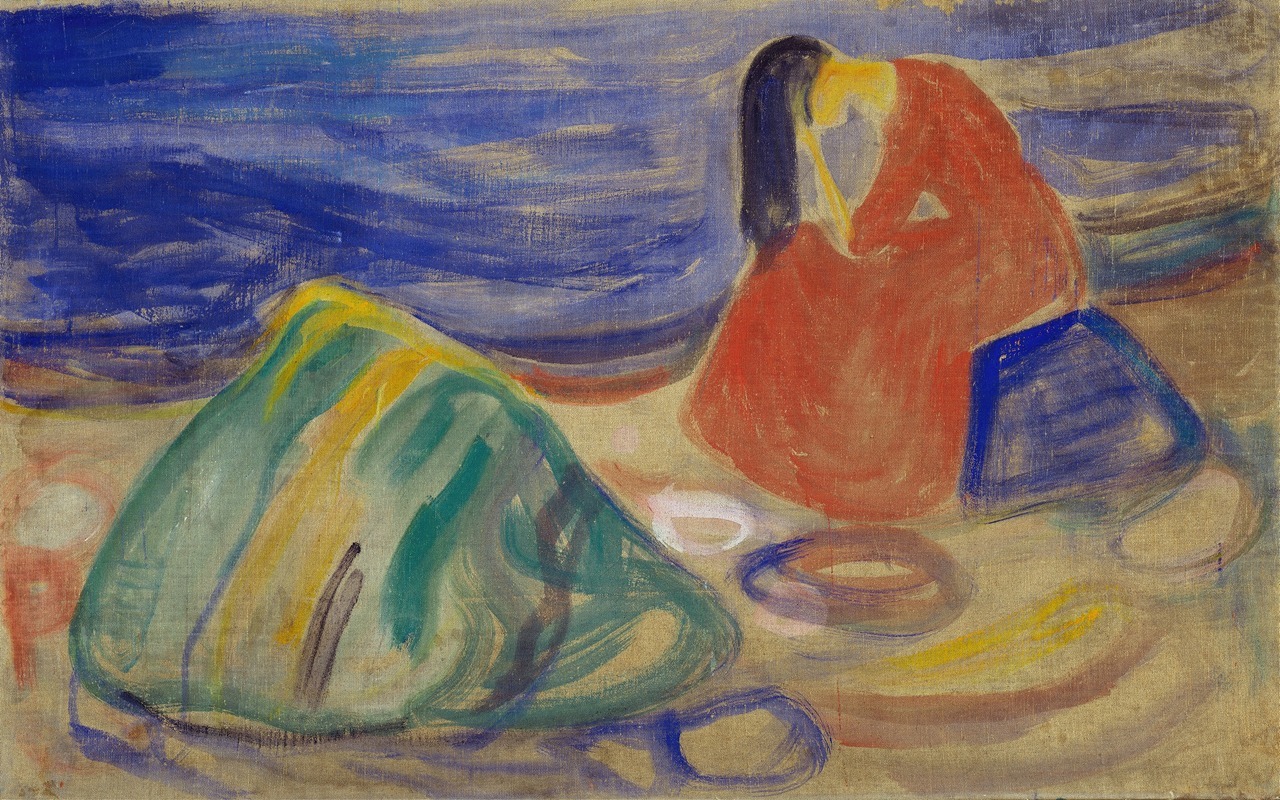
Melancholy. Weeping Woman on the Beach
A hand-painted replica of Edvard Munch’s masterpiece Melancholy. Weeping Woman on the Beach, meticulously crafted by professional artists to capture the true essence of the original. Each piece is created with museum-quality canvas and rare mineral pigments, carefully painted by experienced artists with delicate brushstrokes and rich, layered colors to perfectly recreate the texture of the original artwork. Unlike machine-printed reproductions, this hand-painted version brings the painting to life, infused with the artist’s emotions and skill in every stroke. Whether for personal collection or home decoration, it instantly elevates the artistic atmosphere of any space.
"Melancholy. Weeping Woman on the Beach" is a painting by the renowned Norwegian artist Edvard Munch, created in 1896. Munch is best known for his distinctive style that often explores themes of existential dread, emotional turmoil, and the complexities of human psychology. This particular work is a part of Munch's broader exploration of melancholy and emotional distress, themes that recur throughout his oeuvre.
The painting depicts a solitary woman seated on a beach, her posture and expression conveying a deep sense of sadness and introspection. The setting is typical of Munch's work, where the natural environment often mirrors the emotional state of the figures. The beach, with its vast, open space and the endless horizon, serves as a backdrop that emphasizes the woman's isolation and emotional depth. The use of color and form in the painting is characteristic of Munch's style during this period, with muted tones and fluid lines that enhance the emotional impact of the scene.
Munch's work during the 1890s was heavily influenced by Symbolism, a movement that sought to express the underlying emotions and ideas rather than depict the external world realistically. "Melancholy. Weeping Woman on the Beach" exemplifies this approach, as it focuses on conveying the internal experience of the subject rather than providing a detailed representation of the physical environment. The painting's emotional intensity is heightened by Munch's use of expressive brushwork and a limited color palette, which together create a sense of unease and introspection.
The theme of melancholy is a recurring motif in Munch's work, reflecting his own struggles with mental health and his interest in the human psyche. Munch was deeply influenced by the writings of philosophers and psychologists of his time, including Friedrich Nietzsche and Sigmund Freud, whose ideas about the human condition resonated with his artistic vision. This painting, like many of Munch's works, can be seen as an exploration of the darker aspects of human emotion, capturing the sense of despair and longing that often accompanies moments of deep reflection.
"Melancholy. Weeping Woman on the Beach" is part of a series of works by Munch that explore similar themes, including his famous painting "The Scream." These works collectively form what Munch referred to as the "Frieze of Life," a series that delves into the universal experiences of love, anxiety, and death. The painting is an example of Munch's ability to convey complex emotional states through his distinctive style, which combines elements of Symbolism and Expressionism.
Today, Edvard Munch is celebrated as one of the pioneers of modern art, and his works continue to be studied and admired for their emotional depth and innovative approach to depicting the human experience. "Melancholy. Weeping Woman on the Beach" remains an important piece within Munch's body of work, illustrating his mastery in capturing the subtleties of human emotion and his enduring influence on the art world.









